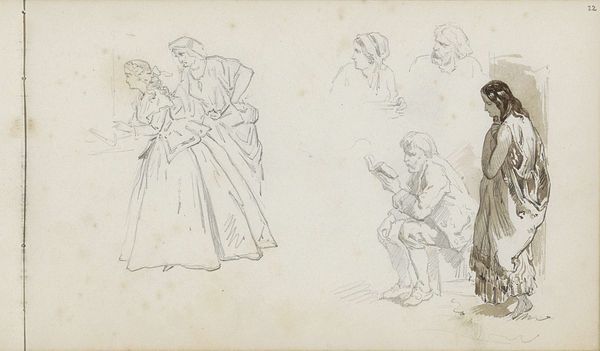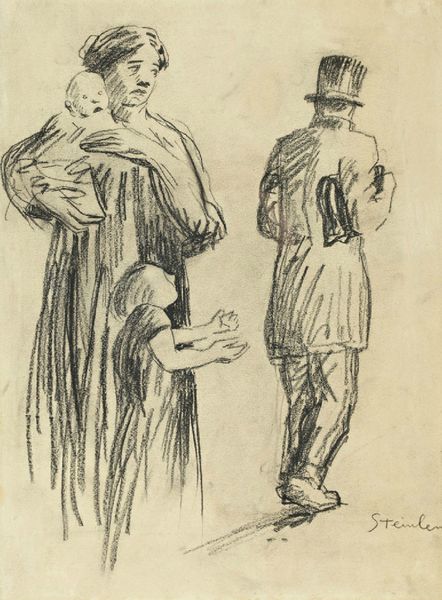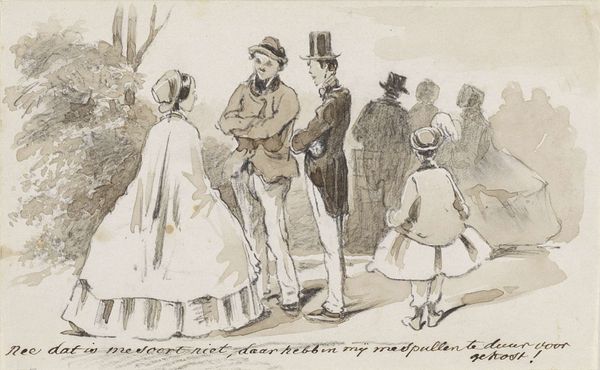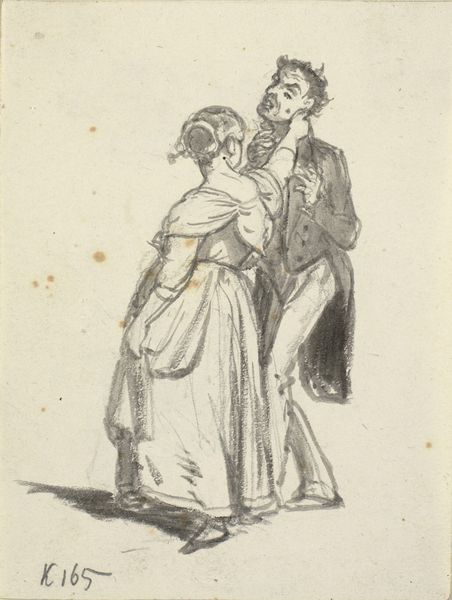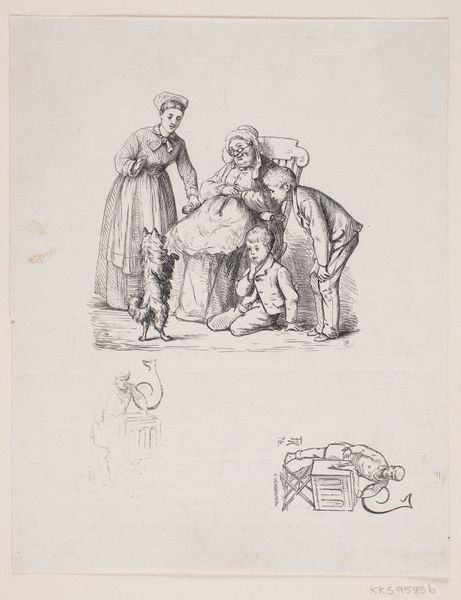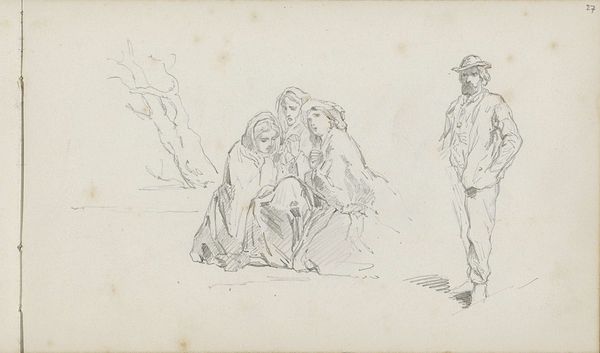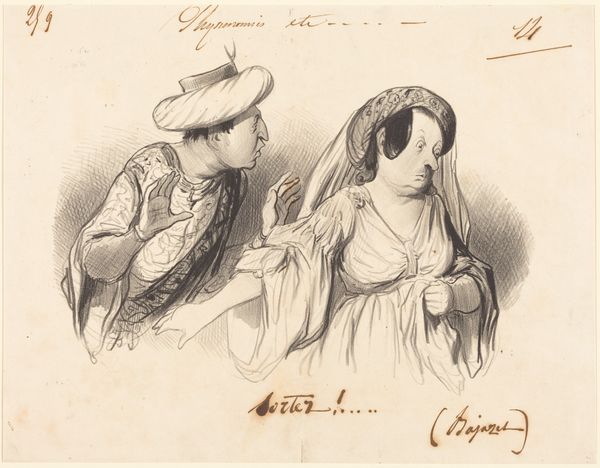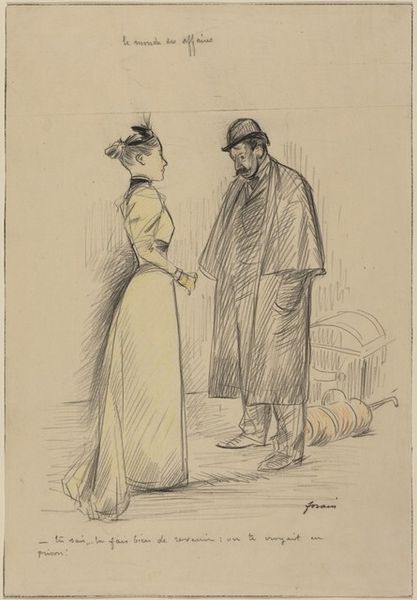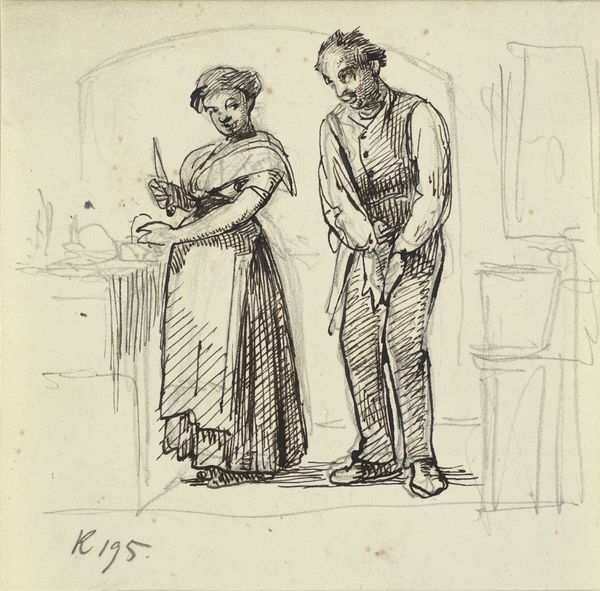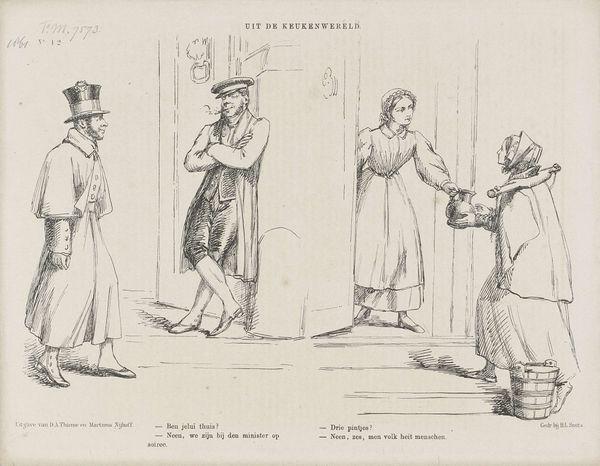
drawing, paper, ink
#
drawing
#
narrative-art
#
figuration
#
paper
#
ink
#
genre-painting
Dimensions: height 89 mm, width 170 mm
Copyright: Rijks Museum: Open Domain
Editor: This is "Man Talking with Two Women" by Pieter van Loon, created sometime between 1811 and 1873. It’s a drawing in ink on paper. It feels very immediate and observational to me – a snapshot of a moment. What do you see in this piece? Curator: Immediately, I see a coded exchange, rendered through visual symbolism deeply embedded in 19th-century Dutch social norms. The man's gesture, that offering from his open hand, juxtaposed with the women's averted gazes, hints at an imbalance of power. Do you notice the difference in their attire? Editor: Yes, the man is wearing a hat and a jacket, while the women have simpler dresses and head coverings. Does the hat signify something specific? Curator: Precisely! Headwear, or lack thereof, could denote social standing or marital status. The man’s hat implies a certain level of societal assertion, compared to the women, whose head coverings suggest modesty and perhaps subservience. These weren't simply garments; they were cultural scripts worn daily. Their poses too—note how the women huddle, almost seeking shelter from his pronouncements. Editor: So, you're saying the drawing captures a power dynamic through clothing and body language? Curator: More than that. It speaks volumes about the unspoken narratives governing interactions of gender in that era. We have to decode the symbols to fully grasp the emotional and psychological nuances conveyed here. What do *you* now make of the exchange? Editor: It’s much more complex than I initially thought! I was focused on it just being a casual street scene, but now I see how the artist embedded these visual cues about status and social roles. I'll definitely pay closer attention to the symbolic weight of clothing in art from now on! Curator: Exactly! Art provides clues; our role is to interpret their language, linking them to collective experiences.
Comments
No comments
Be the first to comment and join the conversation on the ultimate creative platform.


